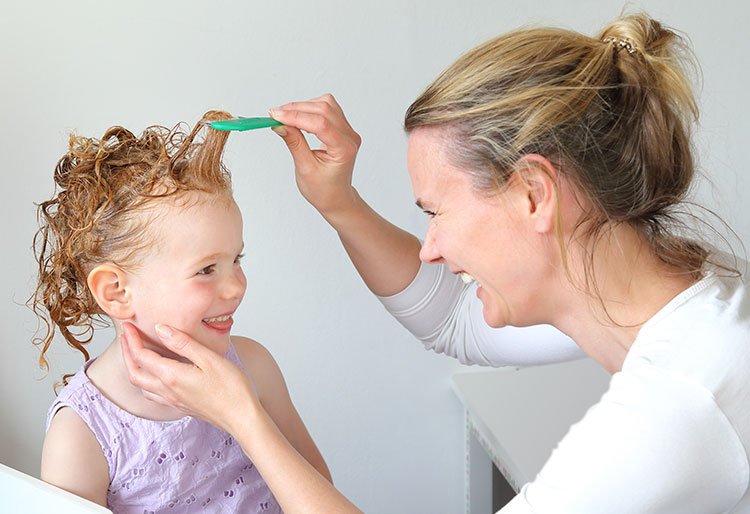Lice Treatment: How to Eliminate Lice
Learn the most effective tricks and best treatments to get rid of lice. We bring you the most effective tips to prevent and remove them.
child care
Share

If there is one thing that really worries parents of school-age children, it's head lice. Every year, pediculosis infestations return to the classroom, creating alarm and discomfort among parents. They are not only a worrying health problem, but they are also quite stressful since they require immediate action to end contagion to the rest of the family or class.
Head lice in children
Lice are insects that live in hair on the head, which is why they are called parasites. You have lice when you see at least 1 live louse or more than 5 eggs on your head. Eggs hatch about one week after they are laid. They're usually found on the back of the neck, the crown, and behind the ears.
Nits are the eggs from lice. They look like white or yellow-brown spots very close to the scalp and stuck to the hair. They are rarely confused with dandruff while falls very easily and nits do not. They are very hard to get rid of.
A newly hatched louse is called a nymph and measures about 1 mm. This parasite sucks blood from the scalp, but it can't lay eggs. After 7 days it becomes an adult louse, which reaches between 3 or 4 mm, and has a darker brown colour. The adult louse female lays between 4 and 8 eggs a day to an average of about 150 eggs, of which 60% will become adults. So, it's very important to repeat the treatment after 7 days to completely get rid of all parasites.
Lice cannot survive away from human hair (only one day) and their eggs are not viable after a week.

Better treatment for lice
As far as treatment is concerned, several topical products have been shown to be effective, such as permethrin, malathion and dimethicone.
1. Permethrin products are the first therapeutic step, since this active substance is effective with both lice and nits; but care must be taken as it can be toxic if used in excess.
2. Malathion products would be the second therapeutic step but are contraindicated for pregnant women and children under six years of age.
3. Products with dimethicone (an active substance in the silicone family) are noteworthy because they are not toxic, and this active substance is not absorbed. It also doesn't hurt either hair or the scalp. It works by wrapping up and asphyxiating the parasite, as well as covering the pores in the eggs, preventing the exchange of air. The advantage of this is that it does not bring about resistance and recent scientific studies show that it is more effective than permethrin. However, conditioners and vinegar should not be applied at the same time because they can deactivate the product.
If lice are to be detected, hygiene measures must also be stepped up to prevent lice from returning:
- Wash all clothes, sheets and towels that the child used while having lice, using very hot water (50-60 °C).
- Clothes that cannot be washed in hot water, stuffed animals, fabric toys and pillows or cushions must be dry cleaned or stored in hermetically sealed bags for about three weeks.
- Carefully pass the vacuum cleaner over mattresses, pillows, sofas, carpets, covered furniture and car upholstery.
- Throw away or disinfect combs, brushes, hair ribbons and bands with hot water and vinegar.
- It's important to repeat this message at school. So, the rest of the parents can check their children and avoid re-infestation
Is it possible to prevent lice?
Unfortunately, there is no scientifically proven product that ensures good lice prevention, since the use of such products in a preventive way can contribute to the resistance of these parasites. The only approach is therefore to:
1. Check your child's head periodically, passing a head lice comb from lock to lock, with all family members.
2. Avoid crowds and head-to-head contact.
3. Avoid sharing clothes that are in contact with hair.






